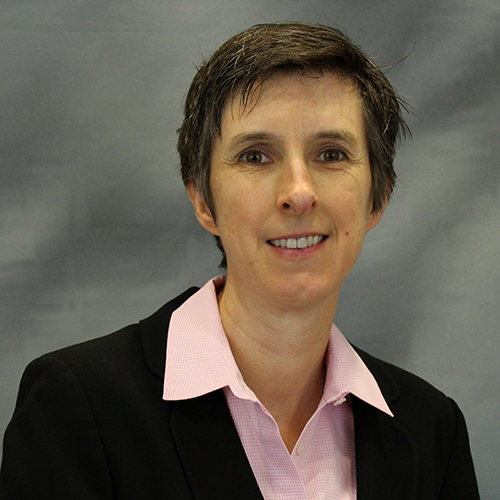Kara Peters Ph.D.
Professor of Mechanical and Aerospace Engineering, NC State University
Associate Department Head
Engineering Building III (EB3) 3116
Bio
Dr. Peters’ long-term goal is to contribute to the advancement of nondestructive evaluation and structural health monitoring techniques for composite aerospace structures. The advancements tend to increase safety and improve performance of structural systems. She served as the program director for the Mechanics of Materials and Structures program at the National Science Foundation from 2015-2018. She is an Associate Editor of the journal Smart Materials and Structures and the ASME Journal of Nondestructive Evaluation, Diagnostics and Prognostics of Engineering Systems. She is also on the editorial board of the journal Measurement Science and Technology.
Dr. Peters teaches Mechanics of Composite Structures (MAE 537). Her presentation in this course has a fundamental flavor. In this course, Dr. Peters surveys composite structures in the aerospace industry, and gives students an understanding of the current state-of-the-art. Dr. Peters teaches Aerospace Structures I and II (MAE 371 and MAE 472). In these courses, she outlines the current state-of-the-art of aircraft structures and describes some of the advancements being anticipated in the near future.
Dr. Peters works closely with her students to help them develop strong experimental problem-solving skills. Her students bridge the gap between optics and mechanics and work in a hands-on, experimental environment. They fabricate the composite structures themselves, from learning how to embed sensors into composite materials to learning how to make different kinds of optical interfaces.
Publications
- Accelerating imaging frequency in high-speed polarization imaging through data modeling , OPTICAL ENGINEERING (2024)
- Dynamic Deployment Sensing of Thin-Shell Composite Structures with Fiber Bragg Gratings , HEALTH MONITORING OF STRUCTURAL AND BIOLOGICAL SYSTEMS XVIII (2024)
- Dynamic measurement of ballistic impact using an optical fibre sensor , SMART MATERIALS AND STRUCTURES (2024)
- Flow-Coating of Adhesively Bonded Optical Fiber Acoustic Couplers , HEALTH MONITORING OF STRUCTURAL AND BIOLOGICAL SYSTEMS XVIII (2024)
- Interaction of Lamb waves and sensors in structural health monitoring of carbon fiber composite , HEALTH MONITORING OF STRUCTURAL AND BIOLOGICAL SYSTEMS XVIII (2024)
- Studying the elastic wave mode propagation in D-shaped optical fibers , HEALTH MONITORING OF STRUCTURAL AND BIOLOGICAL SYSTEMS XVIII (2024)
- Extension of Fiber Bragg Grating Ultrasound Sensor Network by Adhesive Couplers , PHOTONICS (2023)
- Ferroelectric Domain Wall Engineering Enables Thermal Modulation in PMN-PT Single Crystals , ADVANCED MATERIALS (2023)
- High-speed polarization imaging for failure detection in fiber spinning , HEALTH MONITORING OF STRUCTURAL AND BIOLOGICAL SYSTEMS XVII (2023)
- Laser Doppler vibrometry measurements of acoustic attenuation in optical fiber waveguides , APPLIED OPTICS (2023)
